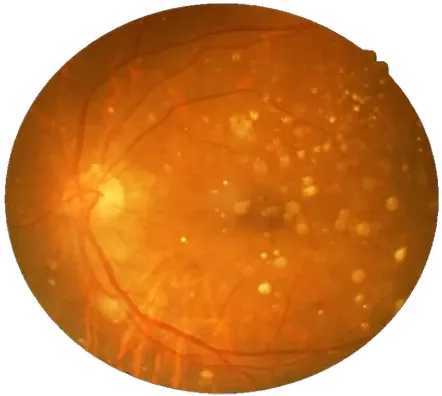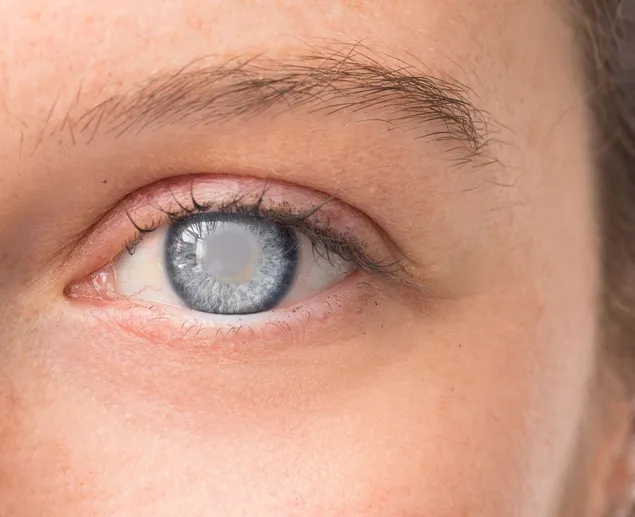Medical Conditions That Impact Your Eyes
Your overall health can have a powerful impact on your vision
At Primary Eye Care Associates, we specialize in monitoring, detecting, and managing the eye complications that can result from systemic diseases, medications, and surgical procedures. Our advanced diagnostics, personalized monitoring plans, and collaborative care model are designed to preserve your vision for a lifetime.
We specialize in care for many medical conditions
affecting the eyes, including:
As we age, cataracts can gradually cloud the eye’s natural lens, causing blurred vision, glare, and difficulty seeing at night. At Primary Eye Care Associates, we detect cataracts early and guide you through the treatment process.
If surgery is needed, we coordinate referrals to trusted local cataract surgeons
We provide personalized pre-surgical evaluations and convenient post-operative care, ensuring you remain supported every step of the way.
Diabetes is one of the leading causes of preventable vision loss in adults. It can damage your eyes silently, often before you notice any symptoms. Diabetic retinopathy, cataracts, and glaucoma are all common complications that require ongoing care and monitoring. At Primary Eye Care Associates, we perform annual dilated eye exams and use advanced imaging technology like OCT and digital retinal photography to detect changes early and help you preserve your vision.
We also coordinate care with your primary care doctor or endocrinologist to manage risks like high blood sugar, cholesterol, and blood pressure. Keeping your eyes healthy means taking a proactive approach to your overall health. Even if your vision seems stable, consistent monitoring is key to catching problems before they progress. Our team is here to support you every step of the way.
Glaucoma is a progressive eye disease that gradually damages the optic nerve — and if left untreated, it can lead to permanent vision loss. Often called the “silent thief of sight,” it typically develops without pain or symptoms, making early detection critical. At Primary Eye Care Associates, we screen for glaucoma using OCT imaging, visual field testing, tonometry, and other advanced tools.
We customize treatment based on the type and stage of your glaucoma, whether it’s open-angle, angle-closure, normal-tension, or secondary. Treatment may include medicated eye drops, laser therapy, or surgery to lower pressure and protect your vision. Ongoing monitoring helps us make timely adjustments to your care. Our goal is to slow or stop disease progression and help you maintain your sight for life.
Certain prescription medications — especially those used to treat autoimmune conditions, heart disease, or diabetes — can cause vision changes over time. Drugs like Plaquenil (hydroxychloroquine), corticosteroids, amiodarone, and tamoxifen are known to affect the retina, optic nerve, or overall visual function. That’s why we offer proactive monitoring for patients on high-risk medications.
Using OCT scans, visual field assessments, and dilated exams, we can detect early signs of eye damage long before symptoms appear. We work closely with your prescribing physician to adjust treatment if needed and safeguard your long-term vision. Regular eye exams are a vital part of your health strategy when taking these medications. With the right care, most vision-related complications can be avoided or minimized.
High blood pressure doesn’t just affect your heart — it can also damage the tiny blood vessels in your eyes. Uncontrolled hypertension can lead to hypertensive retinopathy, a condition that may cause vision changes or signal broader vascular problems. During your eye exam at Primary Eye Care Associates, we use digital retinal imaging and dilation to look for signs of vessel narrowing, hemorrhages, or swelling.
These changes often develop before you feel any symptoms, making the eyes a valuable early warning system. We coordinate care with your primary care provider to help you manage blood pressure and reduce your risk for long-term damage. Protecting your eye health starts with managing your overall health. Our team will keep you informed and supported through every step of your care.
Considering LASIK or another form of vision correction surgery?
We offer thorough evaluations to determine if you’re a good candidate, explain your options, and coordinate your care with leading refractive surgeons.
Our team stays involved before and after your procedure to help you achieve the best possible visual outcomes.

Age-related macular degeneration (AMD) is a chronic condition that affects your central vision, making it difficult to read, drive, or recognize faces. It’s the most common cause of vision impairment in adults over 50. At Primary Eye Care Associates, we use advanced diagnostics — including OCT and high-resolution retinal imaging — to detect early signs of AMD and track its progression over time.
There are two forms of AMD: dry (more common and slower progressing) and wet (less common but more severe). Based on your risk profile, we may recommend lifestyle changes, UV protection, and AREDS2-based supplements to help slow progression. We’ll also provide ongoing education and monitoring to help you protect your independence and visual quality of life. Early detection gives you more options to preserve your sight.
Multiple sclerosis (MS) is a chronic autoimmune condition that can affect the optic nerves and visual pathways. In fact, vision changes like optic neuritis are often among the first symptoms of MS. These can include blurred vision, eye pain, double vision, or involuntary eye movements. At Primary Eye Care Associates, we offer specialized autoimmune vision care to support you through all stages of your MS diagnosis.
We use OCT scans and visual field testing to monitor optic nerve health and detect subtle changes before symptoms worsen. We also communicate closely with your neurologist to ensure your care is coordinated and comprehensive. Vision symptoms can come and go, but regular monitoring helps us catch problems early and protect your long-term eye health. With compassionate care and the right tools, we’re here to help you see clearly — today and in the future.
Schedule Your Medical Eye Exam Today
Your vision deserves expert care — especially when health conditions, medications, or surgical procedures put it at risk.
Trust Primary Eye Care Associates for proactive monitoring, early detection, and personalized management to protect your sight for a lifetime.
- Image
- SKU
- Rating
- Price
- Stock
- Availability
- Add to cart
- Description
- Content
- Weight
- Dimensions
- Additional information
